Hola amigos: A VUELO DE UN QUINDE EL BLOG., la Agencia Espacial Europea ESA, nos está invitando a la inauguración del próximo 3 de abril de 2013 del Centro de Coordinación de Meteorología Espacial de la ESA en el Space Pole de Bruselas, un programa muy avanzado que viene hacer el primer centro del programa de la Agencia para el Conocimiento del Medio Espacial (SSA). A los interesados les adjuntamos la información abajo.................
SPACE SITUATIONAL AWARENESS: SPACE WEATHER
- Description The objective of the SSA programme is to support Europe's independent utilisation of, and access to, space through the provision of timely and accurate information, data and services regarding the space environment, and particularly regarding hazards to infrastructure in orbit and on the ground.
25 March 2013
Media representatives are invited to the inauguration of ESA’s Space
Weather Coordination Centre, the first such centre to be opened under
the Agency’s Space Situational Awareness programme.
The new Space Weather Coordination Centre will serve as the central
access point to a portfolio of European space weather expertise. Located
at the ‘Space Pole’ in Brussels, the Space Weather Coordination Centre
(SSCC) includes the first European space weather helpdesk and, through
this, rapid access to expert support on solar weather, ionospheric
weather, the geomagnetic environment and the orbital radiation
environment. This is made possible by networking and building on key
European assets and expertise.
The SSCC is a dedicated control room where operators monitor the Sun,
the space environment and the Earth environment for early detection of
possible effects of space weather phenomena on economically vital
infrastructures and activities, including gas/oil drilling, electric
power distribution and navigation. This will reduce costs and improve
reliability and information for citizens.
The media briefing is being organised by the European Space Agency in
cooperation with the Solar-Terrestrial Centre of Excellence and will be
held at Space Pole, Meridian Room, Ringlaan/Av. Circulaire 3, 1180
Brussels, on 3 April 2013, 10:30–13:00 CET.
Doors open at 09:45 CET.
Registration
Media representatives wishing to attend the event are requested to register at http://www.esa.int/ssa_sscc_register
Programme
10:30
Welcome and introduction
Ronald Van der Linden, Director General, Royal Observatory Belgium
10:35
Detecting Space Hazards: Strategic objectives of the SSA Programme
Thomas Reiter, ESA Director of Human Spaceflight and Operations
10:45
Space Weather Services: a Belgian Priority
Philippe Mettens, Chairman, Belgian Science Policy Office
10:55
Overview of ESA’s SSA Programme
Nicolas Bobrinsky, ESA Head of Space Situational Awareness Programme
11:05
Space Weather – Impact on critical Infrastructures and Services
Juha-Pekka Luntama, ESA Head of SSA Space Weather Activities
11:15
Profile of the SSA Space Weather Coordination Centre
Michel Kruglanski, Solar-Terrestrial Centre of Excellence
11:25
Open Q&A
11:35
Formal Inauguration ESA’s SSA Space Weather Coordination Centre
VIP photo
VIP photo
11:45
End of formal programme
Media opportunities for individual interviews
12:00
Light buffet lunch
End of programme
About the European Space Agency
The European Space Agency (ESA) is Europe’s gateway to space.
ESA is an intergovernmental organisation, created in 1975, with the
mission to shape the development of Europe’s space capability and ensure
that investment in space delivers benefits to the citizens of Europe
and the world.
ESA has 20 Member States: Austria, Belgium, the Czech Republic, Denmark,
Finland, France, Germany, Greece, Ireland, Italy, Luxembourg, the
Netherlands, Norway, Poland, Portugal, Romania, Spain, Sweden,
Switzerland and the United Kingdom, of whom 18 are Member States of the
EU.
ESA has Cooperation Agreements with eight other Member States of the EU
and is discussing an Agreement with the one remaining (Bulgaria). Canada
takes part in some ESA programmes under a Cooperation Agreement.
ESA is also working actively with the EU, for the implementation of the programmes Galileo and Copernicus.
By coordinating the financial and intellectual resources of its members,
ESA can undertake programmes and activities far beyond the scope of any
single European country.
ESA develops the launchers, spacecraft and ground facilities needed to keep Europe at the forefront of global space activities.
Today, it launches satellites for Earth observation, navigation,
telecommunications and astronomy, sends probes to the far reaches of the
Solar System and cooperates in the human exploration of space.
Learn more at www.esa.int
For further information:
ESA Media Relations Office
Email: media@esa.int
Tel: +33 1 53 69 72 99
Fax: +33 1 53 69 76 90
Jocelyne Landeau-Constantin, ESA/ESOC Corporate Communications Office
Email: esoc.communication@esa.int
Tel: +49 6151 90 2516
ESA Media Relations Office
Email: media@esa.int
Tel: +33 1 53 69 72 99
Fax: +33 1 53 69 76 90
Jocelyne Landeau-Constantin, ESA/ESOC Corporate Communications Office
Email: esoc.communication@esa.int
Tel: +49 6151 90 2516
Copyright 2000 - 2013 © European Space Agency. All rights reserved.
SSA protects Europe's citizens and satellite-based services by detecting space hazards
About Space Situational Awareness
Programme overview
SSA activities
Under the Space Situational Awareness (SSA) programme, Europe is
acquiring the capability to independently watch for objects and natural
phenomena that could harm satellites in orbit or infrastructure – such
as power grids – on the ground. To achieve this, ESA's SSA programme is
focusing on three main areas:
-
SST - Space surveillance and tracking of objects in Earth orbit
Watching for active and inactive satellites, discarded launch stages and fragmentation debris that orbit the Earth. -
SWE - Space weather
Monitoring conditions at the Sun and in the solar wind, and in Earth's magnetosphere, ionosphere and thermosphere, that can affect space-borne and ground-based infrastructure or endanger human life or health. -
NEO - Near-Earth objects
Detecting natural objects that can potentially impact Earth and cause damage.
Last update: 26 March 2013
Guillermo Gonzalo Sánchez Achutegui
ayabaca@gmail.com
ayabaca@hotmail.com
ayabaca@yahoo.com
Inscríbete en el Foro del blog y participa : A Vuelo De Un Quinde - El Foro!
 (755.89 kB)
(755.89 kB)

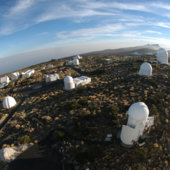
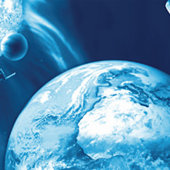

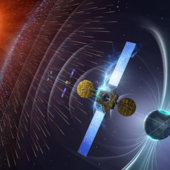
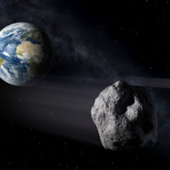
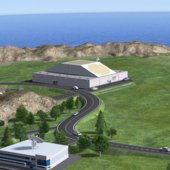
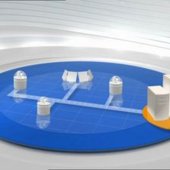

No hay comentarios:
Publicar un comentario